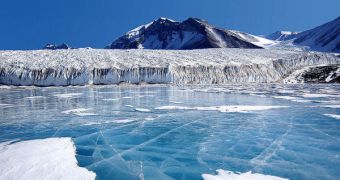According to climate change models covering the Ancient history of the Earth, the Antarctic became covered with the ice sheets it's losing today some 33.5 million years ago, when the overall climate cooled significantly and the planet got converted from a greenhouse to an “ice house.” In the February 27th issue of the journal Science, a team of researchers offers new insight into the changes that affected the global climate and eventually led to the relatively rapid transformation of the Antarctic into an ice field.
Previous studies have it that the ices that appeared at the South Pole had little to no connection to any sort of climate change. But the new data, according to Yale professor of geology and geophysics Mark Pagani, the senior author of the research, comes to strongly disagree with these ideas. He argues that during the transition, the temperature of surface waters all around the globe dropped by some 5 to 10 degrees Celsius and that those recorded at high latitudes might have been about 10°C (about 18˚F) higher than first estimated.
“Previous reconstructions gave no evidence of high-latitude cooling. Our data demonstrate a clear temperature drop in both hemispheres during this time,” he argues. “Temperatures in some regions, just before the Antarctic glaciers formed, were surprisingly higher than current climate models predicted, suggesting that these models underestimate high-latitude warming under high CO2 conditions,” Pagani's postdoctoral student Zhonghui Liu, an assistant professor at the University of Hong Kong and the lead author of the Science paper, adds.
With a little help from the Integrated Ocean Drilling Program (IODP), which has surveyed Ancient plankton remains for oxygen isotopes, the researchers have established that the temperatures were a lot higher than first estimated, before the Antarctic started getting covered by ice. It took just 100,000 years for the entire Southern continent to get topped by it, which is a blink of an eye, in geological terms. “Just over thirty-five million years ago, 'poof,' there was an ice sheet where there had been subtropical temperatures before,” Purdue University researcher Matthew Hubber, one of the co-authors of the research, concludes by saying.

 14 DAY TRIAL //
14 DAY TRIAL //